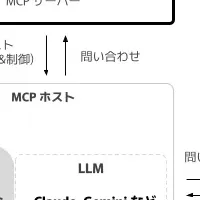
Predictive Maintenance Market To Surpass $91 Billion By 2033 With Technology-Driven Growth
The Predictive Maintenance Market: A Growing Sector
The predictive maintenance market has witnessed remarkable growth, advancing from a valuation of approximately $8.96 billion in 2024 to a projected $91.04 billion by 2033, at a compound annual growth rate (CAGR) of 29.4%. This rapid expansion reflects the increasing emphasis organizations place on operational efficiency and cost reduction across various sectors including manufacturing, aerospace, energy, and healthcare.
Technological Innovations Driving Growth
Several key technology giants are leading the charge in this market, integrating advanced solutions to optimize operational systems. Companies like IBM, Microsoft, and Google Cloud are accelerating innovation with services that enhance enterprise system capabilities. An exemplary case is Toyota’s utilization of IBM’s Maximo application, resulting in substantial operational improvements through real-time monitoring of equipment. This evolution is critical; as unexpected downtimes can accumulate costs that soar above $100,000 per hour, making preventive analysis an urgent need.
Market Segments and Their Dynamics
The aerospace and defense sections, in particular, are experiencing robust growth, leveraging AI-fueled analytics to lower the frequency of costly interruptions. Emerging technologies such as digital twins and advanced cloud solutions have emerged as game-changers within predictive maintenance, particularly with Industry 4.0’s momentum. Nearly 30% of manufacturing facilities are currently implementing predictive maintenance strategies, highlighting the sector's trajectory towards a more technologically integrated approach.
Future Growth Projections
The path ahead for the predictive maintenance market appears promising, underpinned by the evolution of analytical technologies and processes. The market's growth hinges upon three main methodologies: indirect failure prediction, anomaly detection, and remaining useful life assessments, with anomaly detection gaining popularity owing to its lower data demands.
Furthermore, the advent of cloud deployment considerably enhances system scalability, appealing to small and medium-sized businesses that require manageable solutions. Several innovations, such as vibration monitoring and augmented reality-enabled maintenance tasks, are expected to bolster technician efficiency and enhance equipment operation.
Current Market Trends
The transformation from traditional preventive maintenance to sophisticated AI-driven solutions marks a pivotal shift within diverse industries. Manufacturing, energy, healthcare, and aviation sectors are now fully aware of the strategic advantages of predictive maintenance, including reduced operational costs and enhanced equipment reliability. Notably, manufacturers employing predictive analytics have reported average downtime cost reductions exceeding $100,000 per incident, affirming the approach’s economic viability along with its efficient operational benefits.
Competitive Landscape
The technology sector continues to evolve, with major players like IBM’s Maximo Application Suite leading the market with its AI capabilities. Microsoft’s Azure Predictive Maintenance uses machine learning to accurately predict equipment failures while Google Cloud’s solutions enhance real-time manufacturing insights. Collaborations between solution providers and industrial automation firms are facilitating integrated offerings that blend operational and IT frameworks.
Emerging Technologies
The market continues to innovate continuously, especially with advanced AI and machine learning capabilities seeing upticks in efficiency. Digital twins are revolutionizing predictive maintenance, creating accurate virtual representations that forecast failure patterns effectively. Companies have reported maintenance planning efficiencies boosted by as much as 40%, in addition to having anticipated breakdowns diminished by half.
Sector-specific Insights
Different industries exhibit unique adoption patterns; the manufacturing area is leading the way. Discrete manufacturing sectors have recorded maintenance savings from predictive maintenance in the range of $300,000 to $500,000 annually. Moreover, large organizations in energy and utilities are similarly benefiting from improved reliability metrics in critical infrastructure monitoring.
Regional Growth Highlights
Geographically, North America leads in the predictive maintenance market, with manufacturing firms reporting substantial cost savings from predictive maintenance integrations. Meanwhile, European markets, particularly in automotive and chemical processing industries, are realizing significant benefits as well. The Asia-Pacific region, with countries like Japan and China, is gaining momentum in embracing innovative predictive maintenance solutions.
Conclusion
As the predictive maintenance market rapidly evolves, it signifies a major shift within industries toward more proactive, data-driven strategies. Organizations that invest in these emerging technologies are positioning themselves not only to enhance operational efficiency but also to achieve substantial long-term cost savings. The future of predictive maintenance appears bright, with advancements and strategic adoptions paving the way for a transformative era in operations management.
Topics Business Technology)










【About Using Articles】
You can freely use the title and article content by linking to the page where the article is posted.
※ Images cannot be used.
【About Links】
Links are free to use.